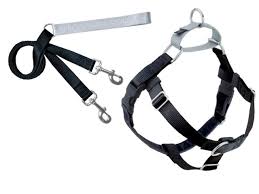
No-Pull Harness vs. Front-Clip Harness: Pros and Cons
In spite of the dimensions and durability in our furry friends, it is really not rare for dogs to obtain effortlessly distracted by their surroundings. They might lunge towards other creatures and individuals, resulting in an uneasy and hazardous experience for the two dog and the owner. This is where a no-pull harness is useful. A no-pull harness is designed to get rid of the pressure through your dog’s throat and straight it on their chest, making it easier to manage them. In this article, we provides you with an extensive guide on how to pick the perfect no-pull harness for your furry close friend.
1. Calculate your dog appropriately
The same as us humans, custom dog harness come in different styles and sizes. Prior to buying a no-pull harness, usually measure your dog’s torso and neck area to actually receive the correct dimensions. An unacceptable dimensions might cause your dog to sense unpleasant, providing the harness useless. Use a tape measure to have the circumference of your dog’s throat and upper body, in which the harness will come in contact. Alternatively, you are able to refer to the manufacturer’s dimension information, which is usually offered on their website.
2. The Content from the Harness
The material of the dog’s no-pull harness is additionally crucial. Some components may irritate your furry friend’s epidermis and lead to irritation. The most common components used to make no-pull harnesses are natural leather, nylon, and neoprene. Leather material harnesses are long lasting but may take the time to burglary. Nylon material harnesses are weather-proof but might not be as secure for your dog. Neoprene harnesses are delicate and cozy but is probably not as resilient because the other two components. Opt for sensibly.
3. The Harness Design and style
No-pull harnesses may be found in various models. Some have a front and back relationship, while others just have one interconnection stage. Some harnesses have additional features like extra padding, refractive bands, and retractable leashes. In case you have a robust dog, consider picking a harness having a entrance interconnection to offer you far better management. If your dog isn’t a solid puller, a rear interconnection harness may be sufficient.
4. The Type of Clip
The sort of clip on your no-pull harness is very important mainly because it determines how simple it can be to put on and take off. There are two types of clips: buckle clips and click clips. Buckle clips are more safe and can’t be accidentally established, however they be more difficult to put on and take off. Click clips, however, are quicker to put on and take away but will come undone if your dog draws tough.
5. Ease and comfort
Comfort and ease is crucial with regards to choosing a no-pull harness for your dog. Generally be sure that the harness you choose is cozy for your furry close friend by examining that it satisfies snugly however, not too tight. The harness should enable your dog to advance easily without rubbing against their epidermis. Also, make certain the harness doesn’t constrain your dog’s inhaling.
In short:
In In a nutshell, picking out the perfect no-pull harness for your furry close friend demands consideration of several variables like sizing, materials, style, clip variety, and comfort. A good no-pull harness will help you to take control of your dog’s activity with out causing irritation. Generally remember to measure your dog’s torso and throat before buying a no-pull harness to ensure that you obtain the appropriate dimensions. Eventually, the supreme help guide choosing a no-pull harness for dogs should help you make the correct choice for your furry close friend.